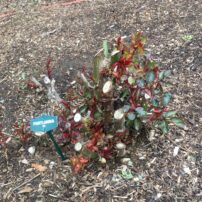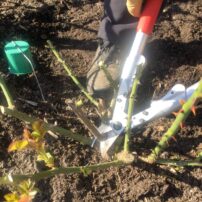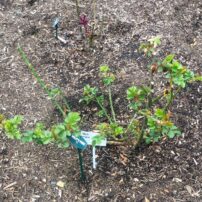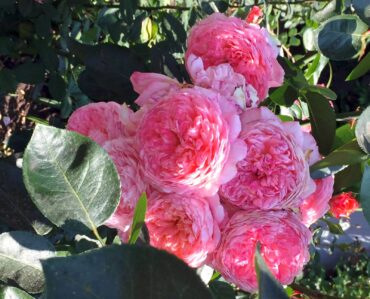
If you have roses in your garden that were planted two or three years ago, you probably need to prune them for their best health, shape and size. Pruning roses is an annual task.
After you gather and sharpen your pruners and possibly also loppers, you are ready to evaluate the rose bush from the base upward. Identify the newest canes — they are the greenest. Then you will begin by cutting out the oldest gray or brown canes at the base, up to one third of the total number of canes.
A garden experiment last year with two plants of the same variety, ‘Violet’s Pride,’ produced interesting results. This disease-resistant floribunda would be a fragrant addition to any garden. It’s still for sale at local nurseries because it’s such a great rose.

The technique experiment was to do two types of cane pruning: high pruning (trimming canes back to knee height) and low pruning (trimming canes back to 6 inches to 1 foot tall). High and low pruning followed by regular applications of water and fertilizer provides larger flowers on both hybrid tea and floribunda roses.
This project began on Feb. 20, 2020, which is an early date for pruning in our area, but the roses performed well. The only possible problem with this early pruning could happen if your garden gets a hard freeze that kills any new growth that may have started. If that happens, just prune the late damage away.
The weather forecast and your garden microclimate will help you decide when to prune.
Perhaps you have one large rose that needs to be transplanted because you did not realize how large it would become when fully mature. Mid-February to the end of May or mid to late October are the ideal times to move a rose. You can do it successfully during the dry months if you provide water several times a week, not allowing that plant to dry out as the new roots form.
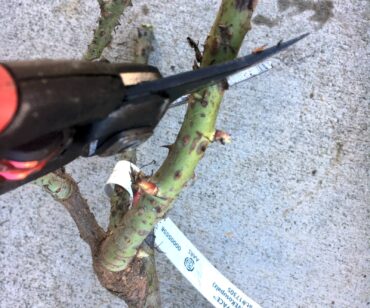
When planting or replanting any rose, don’t use chemical fertilizer in the hole, because it will shock the plant to death. Alfalfa meal or bone meal would be a milder choice.

In Sally Eastman’s Poulsbo garden, ‘Portlandia’ grew much larger than expected and needed to be moved in February 2020. The approach to this project was to cut the canes down to a few inches from the graft, then remove the plant, saving as much of the root ball as possible.
You’ll be surprised how this severe treatment will rejuvenate an older rose even if you’re not moving it. New canes and better flowers will grow the first year and by the second and third year, you’ll be very pleased with the results.
Evaluate each rose in your garden individually. Rose pruning is not a technique for every plant activity. Look at the size of the plant, determine any crossing canes and decide which canes are smaller than a pencil and remove them.
Roses need strong canes to support the blooms. You will not kill a rose by pruning it. The more years you leave a plant unpruned, the more difficult the ultimate chore will become.
For additional information, go to the American Rose Society website, rose.org.





